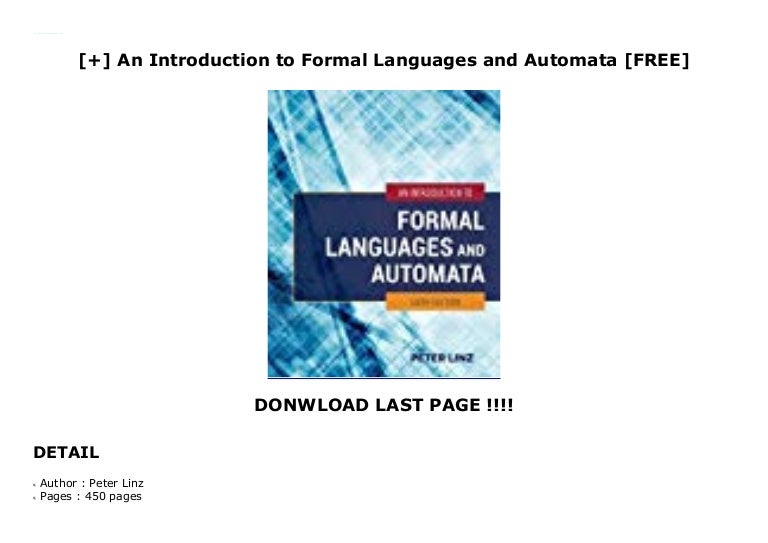
- AN INTRODUCTION TO FORMAL LANGUAGES AND AUTOMATA HOW TO
- AN INTRODUCTION TO FORMAL LANGUAGES AND AUTOMATA SOFTWARE
- AN INTRODUCTION TO FORMAL LANGUAGES AND AUTOMATA SERIES
Solving problems related computer system, whether hardware or software, is what the course deals about.Īfter completion of this course, students will be able to: types and installation, RAM types and installation, expanding computer using cards, troubleshooting computer problems, and installing OS and application packages.
AN INTRODUCTION TO FORMAL LANGUAGES AND AUTOMATA SOFTWARE
This course exposes the student to hardware components of computer system and software from technician’s point of view. The course utilizes a hands-on approach to guide students through learning and understanding the design and development process.The course will address the need for facilitating a 'global' user experience, through independent student projects that target a 'global or social' theme and deliver a complete solution involving design, development, and usability testing of a localized and responsive mobile application.
AN INTRODUCTION TO FORMAL LANGUAGES AND AUTOMATA HOW TO
In the process of developing these applications, students will develop a strong understanding of the Swift programming language, iOS /android OS application development, mobile-centered design, and how to ensure technical quality in software development.

AN INTRODUCTION TO FORMAL LANGUAGES AND AUTOMATA SERIES
Students will develop a series of smaller iOS/android OS applications in weekly lab sessions as well as larger application as part of a course project. This course module provides students with the concepts and techniques to design and develop mobile applications with iOS/android OS and to understand the design and development process involved and state-of-the-art mobile usability testing methods.

Reducing the number of states in Finite AutomataĬhapter three Regular Languages and Regular Grammars.Equivalence of Deterministic and Non-deterministic Finite Automata.


The author, Peter Linz, continues to offer a straightforward, uncomplicated treatment of formal languages and automata and avoids excessive mathematical detail allowing students to focus on and understand the key underlying principles.On completion of this course students should be able to: Written to address the fundamentals of formal languages, automata, and computability, the text is designed to familiarize students with the foundations and principles of computer science and to strengthen the students' ability to carry out formal and rigorous mathematical arguments. An Introduction to Formal Languages and Automata, Sixth Edition provides an accessible, student-friendly presentation of all material essential to an introductory Theory of Computation course.


 0 kommentar(er)
0 kommentar(er)
